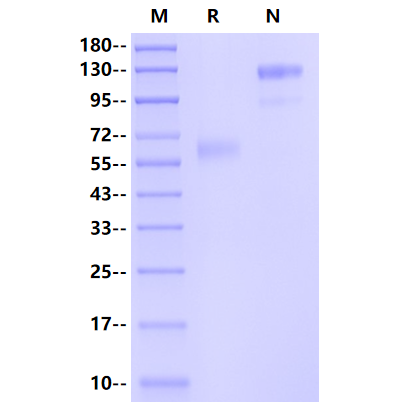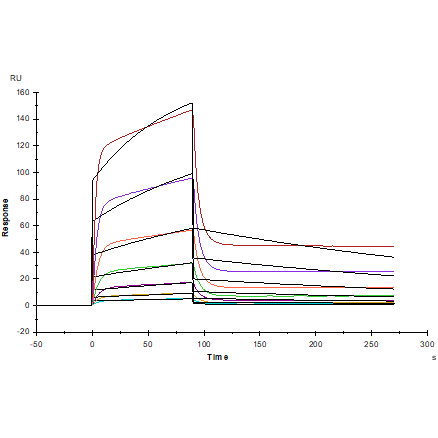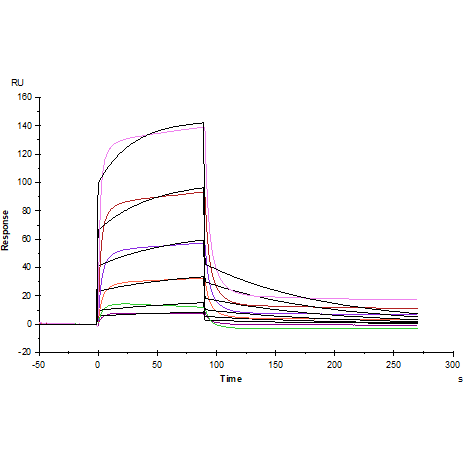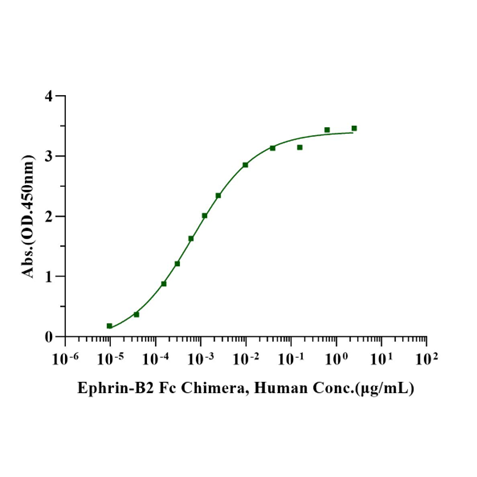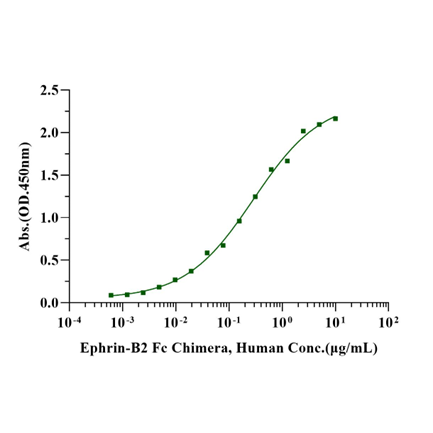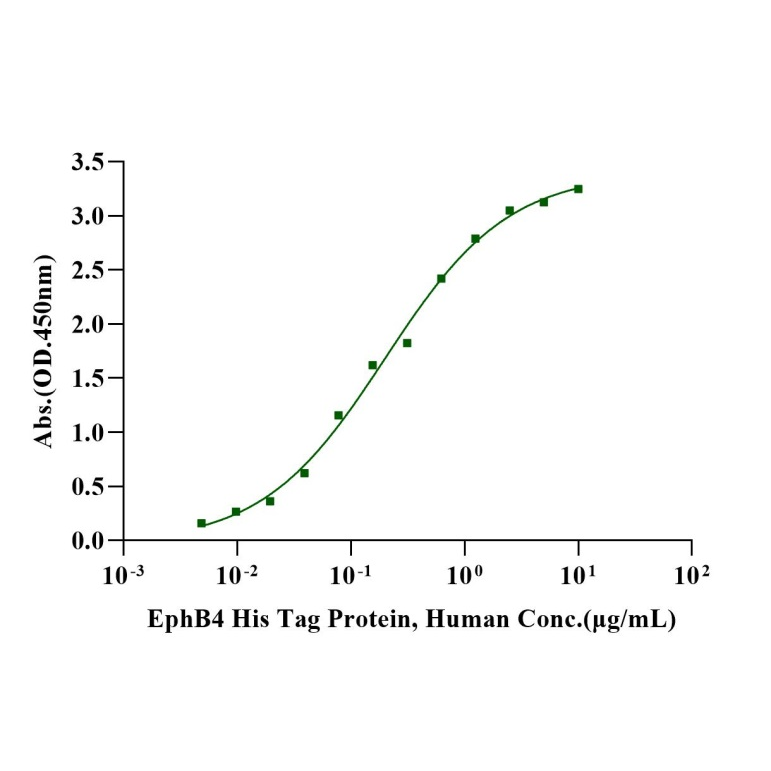Product Details
Product Details
Product Specification
| Species | Human |
| Synonyms | HTKL; EPLG5; Htk-L; LERK5 |
| Accession | P52799 |
| Amino Acid Sequence | Ile28-Ala229, with C-terminal Human IgG1 Fc |
| Expression System | HEK293 |
| Molecular Weight | 57-65kDa (Reducing) |
| Purity | >95% by SDS-PAGE |
| Endotoxin | <0.1EU/μg |
| Conjugation | Unconjugated |
| Tag | Human Fc Tag |
| Physical Appearance | Lyophilized Powder |
| Storage Buffer | PBS, pH7.4 |
| Reconstitution | Reconstitute at 0.1-1 mg/ml according to the size in ultrapure water after rapid centrifugation. |
| Stability & Storage | · 12 months from date of receipt, lyophilized powder stored at -20 to -80℃. · 3 months, -20 to -80℃ under sterile conditions after reconstitution. · 1 week, 2 to 8℃ under sterile conditions after reconstitution. · Please avoid repeated freeze-thaw cycles. |
Background
The ephrins and EPH-related receptors comprise the largest subfamily of receptor protein-tyrosine kinases and have been implicated in mediating developmental events, especially in the nervous system and in erythropoiesis. Based on their structures and sequence relationships, ephrins are divided into the ephrin-A (EFNA) class, which are anchored to the membrane by a glycosylphosphatidylinositol linkage, and the ephrin-B (EFNB) class, which are transmembrane proteins.
Members of the ephrin cell-surface protein family interact with the Eph receptors, the largest family of receptor tyrosine kinases, mediating bi-directional signaling during tumorogenesis and various developmental events. Surprisingly, ephrin-B2 and -B3 were recently identified as entry receptors for henipaviruses, emerging zoonotic paramyxoviruses responsible for repeated outbreaks in humans and animals in Australia, Southeast Asia, India and Bangladesh. The entry of henipavirus is initiated by the attachment of the viral G envelope glycoprotein to the host cell receptors ephrin-B2 and/or -B3, followed by activation of the F fusion protein, which triggers fusion between the viral envelop and the host membrane.
Picture
Picture
SDS-PAGE

ELISA
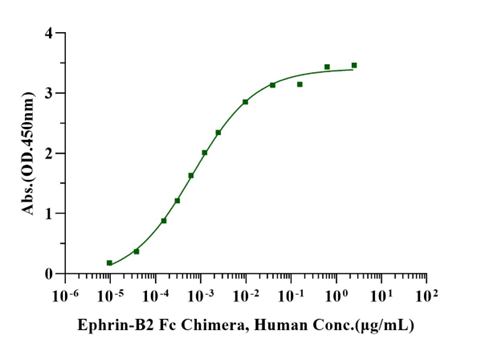
Immobilized EphB2 His Tag, Human
(Cat. No. UA010599) at 2.0μg/mL (100μL/well) can bind Ephrin-B2 Fc Chimera,
Human (Cat. No. UA010160) with EC50 of 0.48-0.90ng/ml.
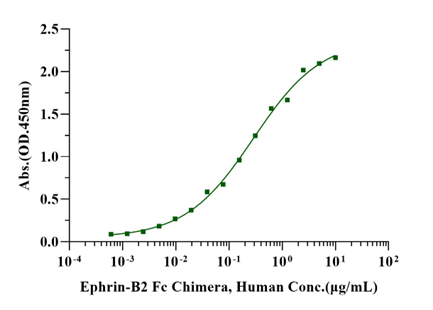
Immobilized EphB6 His Tag, Human
(Cat. No. UA010602) at 2.0μg/mL (100μL/well) can bind Ephrin-B2 Fc Chimera,
Human (Cat. No. UA010160) with EC50 of 0.22-0.39μg/ml.
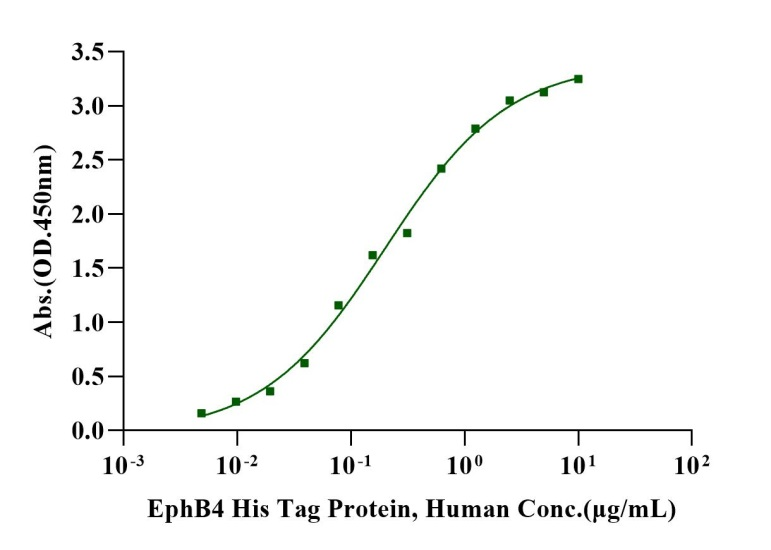
Immobilized Ephrin-B2 Fc Chimera Protein, Human (Cat. No. UA010160) at 2.0μg/mL (100μL/well) can bind EphB4 His Tag Protein, Human (Cat. No. UA010666) with EC50 of 0.15-0.27μg/mL .
SPR
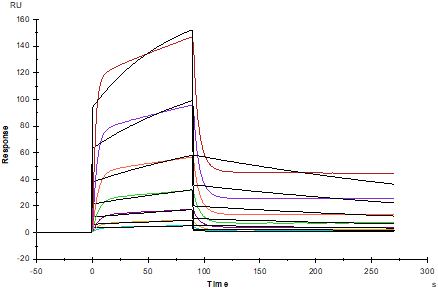
Protein A Chip captured Ephrin-B2 Fc Chimera, Human (Cat. No. UA010160), can bind EphB2 His Tag, Human (Cat. No. UA010599) with an affinity constant of 23.71nM as determined in SPR assay.
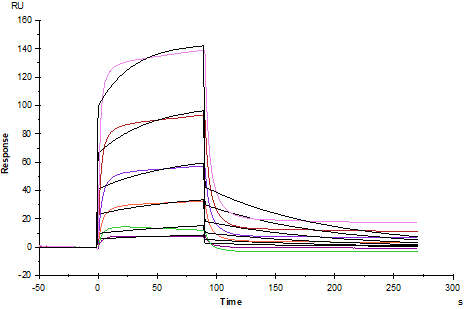
Protein A Chip captured Ephrin-B2 Fc Chimera, Human (Cat. No. UA010160), can bind EphB6 His Tag, Human (Cat. No. UA010602) with an affinity constant of 0.20μM as determined in SPR assay.
